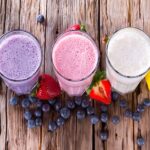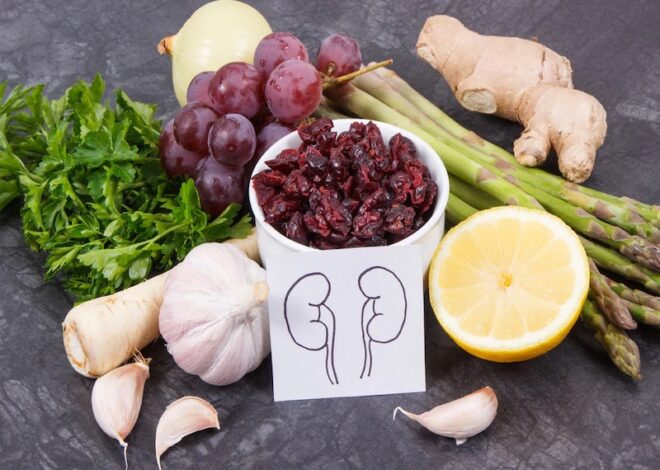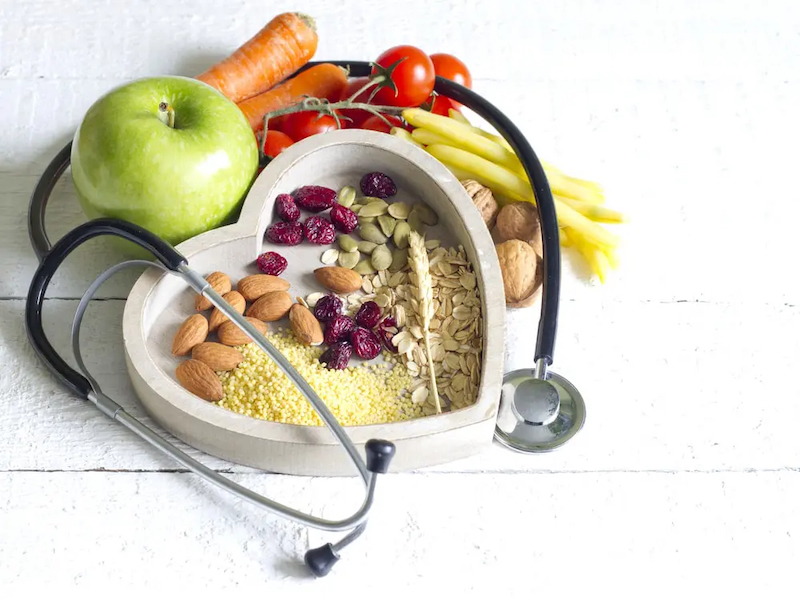
Answer: What foods lower blood pressure?
What foods lower blood pressure? This is a question that many people are interested in, especially those who are facing high blood pressure. Changing your diet is one of the most natural and safe ways to control blood pressure. Many studies have shown that choosing the right foods can not only help lower blood pressure but also improve overall heart health.
In this article, we will explore foods that can lower blood pressure and how they can help you maintain a healthier life.
What foods lower blood pressure?
Certain foods and diets can help control blood pressure.
According to the United States Department of Agriculture (USDA), a serving is typically:
- 1 cup of cooked or raw fruits or vegetables
- 1 cup of 100% fruit juice
- 2 cups of raw greens
- Half a cup of dried fruit
- For most ages, the USDA recommends consuming about 2 cups of fruit and 3 cups of vegetables each day, although this amount may vary depending on age and gender.
Berries
Berries like blueberries and strawberries contain antioxidants called anthocyanins. A 2019 study found that anthocyanins and berries rich in anthocyanins may help lower blood pressure. You can snack on them, add them to smoothies, or sprinkle them on your oatmeal for breakfast.
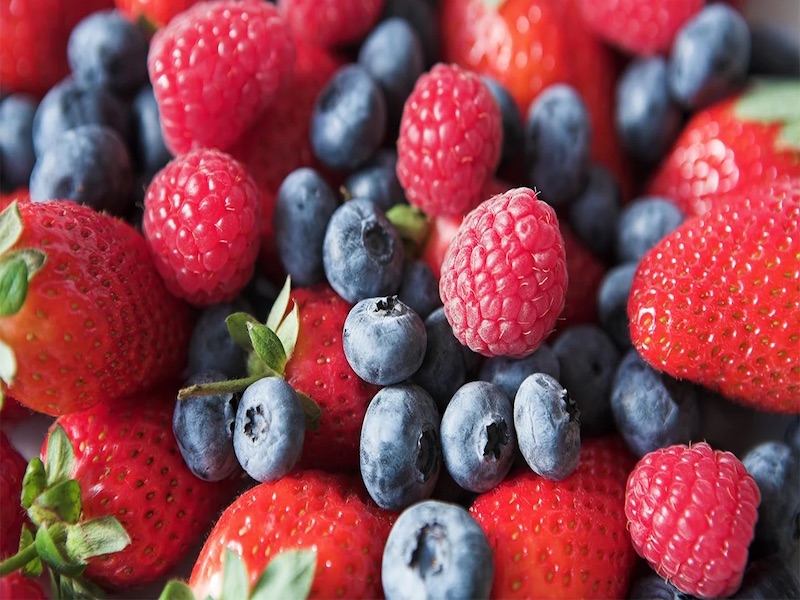
Bananas
Bananas contain potassium, which helps manage high blood pressure. A medium banana contains about 422 mg of potassium. According to the American Heart Association (AHA), potassium reduces the effects of sodium and helps reduce tension in blood vessel walls. You can eat one large banana, 1 cup of sliced bananas, or two-thirds of a cup of mashed bananas.
Beets
Beet juice may help lower blood pressure in the short and long term thanks to its nitrate content. A 2022 study found that nitrate from beet juice helped lower systolic blood pressure in people with arterial hypertension. You can drink a glass of beet juice every day, add beets to salads, or eat beets as a side dish.
Dark chocolate
The cocoa in dark chocolate contains flavonoids, a type of antioxidant. Flavonoids may help lower blood pressure, but small amounts of chocolate can be part of a balanced diet. Eat chocolate for enjoyment rather than for health reasons.
Kiwis
Eating kiwis every day may lower systolic blood pressure. A 2022 study found that people who ate 2 kiwis a day before breakfast for 7 weeks reduced their systolic blood pressure by 2.7 mmHg. Kiwis also contain vitamin C, which helps lower blood pressure.
Watermelon
Watermelon contains the amino acid citrulline, which helps the body produce nitric oxide, which relaxes blood vessels and increases the flexibility of arteries, thereby helping to lower blood pressure. You can drink watermelon juice, add it to salads or smoothies, or make it into cold watermelon soup.
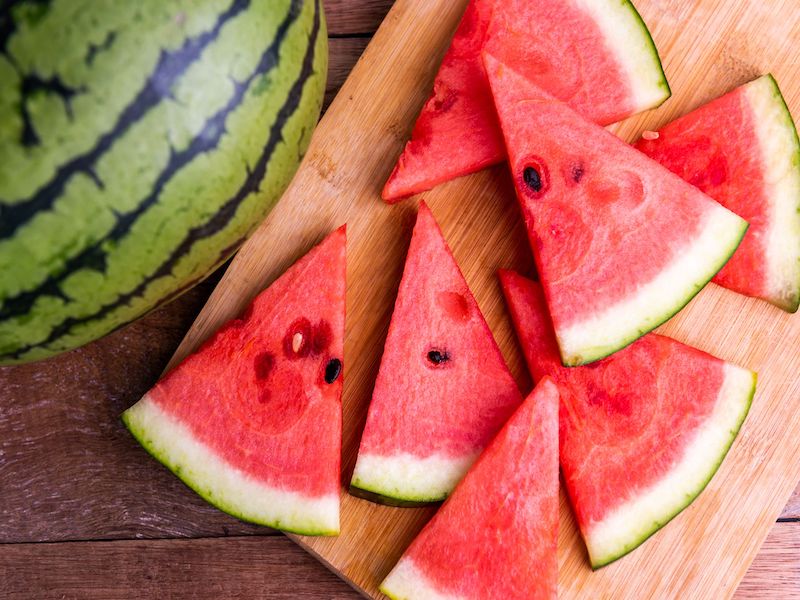
Oats
Oats contain beta-glucan, a type of fiber that may benefit heart health and blood pressure. A 2020 study found that beta-glucan and avenanthramide C in oats helped reduce malondialdehyde levels, an indicator of oxidative stress.
Leafy green vegetables
Leafy green vegetables are high in nitrates, which help manage blood pressure. A 2021 study found that eating at least 1 cup of leafy green vegetables per day may reduce blood pressure and the risk of cardiovascular disease. Examples of leafy green vegetables include cabbage, bok choy, kale, mustard greens, spinach, and Swiss chard.
Garlic
Garlic has antibiotic and antifungal properties, likely due to its main active ingredient, allicin. A 2020 review concluded that garlic may reduce blood pressure, arterial stiffness, and cholesterol.
Fermented foods
Fermented foods contain probiotics, beneficial bacteria that help manage blood pressure. A 2020 study found that postmenopausal women who ate fermented soy foods had a lower risk of high blood pressure. Fermented foods can include kimchi, kombucha, apple cider vinegar, miso, and tempeh.
Lentils and other beans
Lentils provide protein and fiber, and experts say they may benefit the blood vessels of people with high blood pressure.
A 2022 study that analyzed bean consumption over 3.7 years in 7,522 people from the United Kingdom found that consuming 55–70 grams of beans per day was associated with a lower risk of high blood pressure. Legumes include lentils, peas, beans, and more.
You can use lentils in a variety of ways, such as:
- Replacing ground meat
- Adding to salads
- As a base for stews and soups
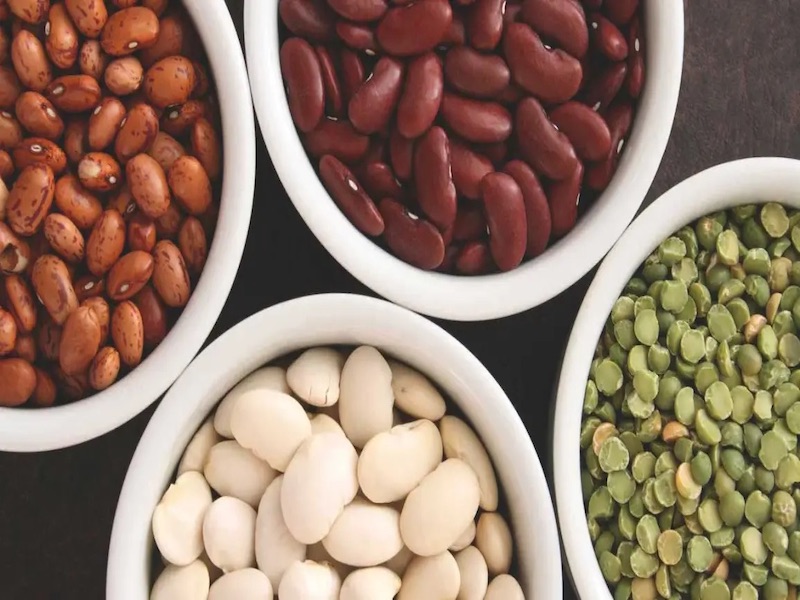
Natural yogurt
Yogurt is a fermented milk food.
A 2021 study looked at data on people with and without high blood pressure to determine the link between fermented dairy products and blood pressure. People with high blood pressure who consumed more yogurt had lower systolic and arterial blood pressure than those who did not.
To enjoy plain yogurt:
- Add 1 tablespoon to stews or curries
- Mix with chopped cucumber, mint, and garlic as a side dish
- Use instead of whipped cream on fruits and desserts
- Spoon over oatmeal, nuts, and dried fruit for breakfast
Pomegranate
Pomegranates contain antioxidants and other components that may help prevent high blood pressure and atherosclerosis.
A 2018 trial found that daily consumption of pomegranate juice may reduce systolic and diastolic blood pressure in people with diabetes. However, more research is needed.
A 2017 review of eight human trials found that consistent consumption of pomegranate juice helped lower blood pressure. You can consume whole pomegranates or pomegranate juice. When buying bottled pomegranate juice, check to make sure it does not have added sugar.
Cinnamon
Cinnamon may modestly lower blood pressure, according to a 2020 review. The authors found that consuming up to 2 grams of cinnamon per day for 8 weeks or more may reduce blood pressure in people with a body mass index (BMI) of 30 or higher.
To add cinnamon to your diet, you can:
- Add it to oatmeal instead of sugar
- Sprinkle it on freshly cut fruit
- Add it to smoothies
Nuts
Research suggests that eating a variety of nuts may help manage high blood pressure.
A 2019 study found that regular walnut consumption reduced systolic blood pressure in older adults with high diastolic blood pressure.
A 2022 cross-sectional study also found that moderate nut consumption, ranging from 55–100 grams per day, may help manage high blood pressure in children.
Choose unsalted nuts and:
- Eat as a snack
- Add to salads
- Blend into pesto
- Use in main dishes, such as toasted nuts
- People with nut allergies should not consume them.
Conclusion
So, there you have it, the answer to the question What foods lower blood pressure? From potassium-rich vegetables to antioxidant-packed berries, each food offers unique health benefits for the heart.
What’s more, maintaining a healthy diet, combined with an active lifestyle and stress management, can not only help lower blood pressure but also reduce the risk of heart-related diseases. Start by adding these foods to your diet. Follow Evaworlds now.



